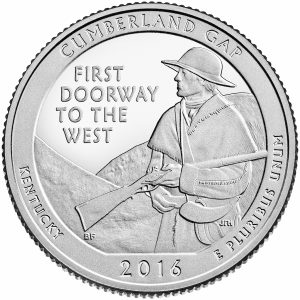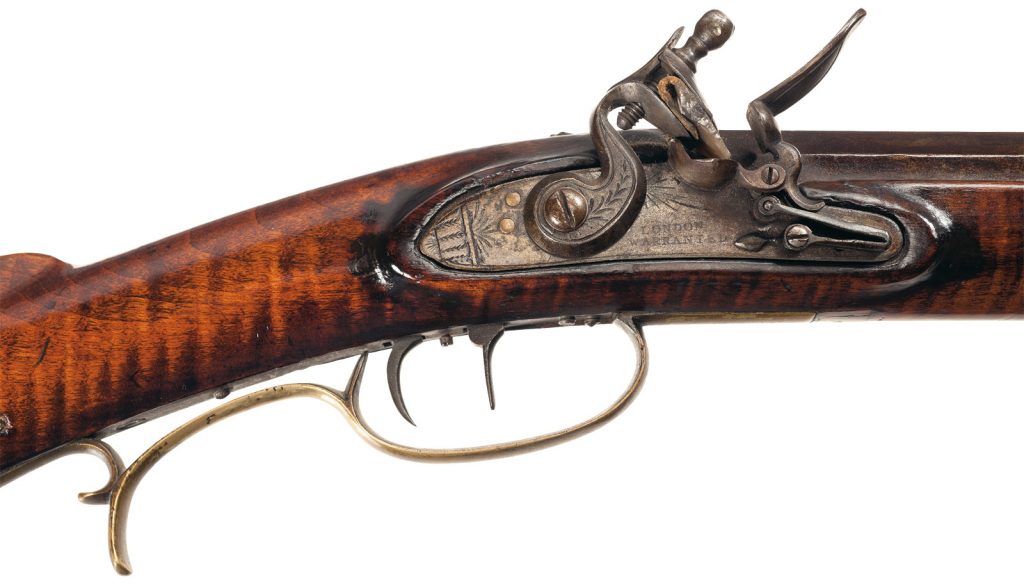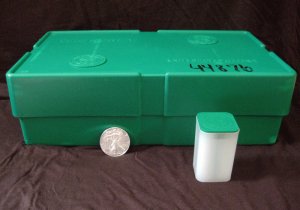Will the World’s Fair of Money Be Canceled
 Trying to assess the short-term future of our life during this stage of the pandemic has many of us wondering when the numismatic shows will restart? Smaller shows have found ways of being held with required social distancing. A few medium-sized shows have moved to larger venues to allow for social distancing, but what about the big shows.
Trying to assess the short-term future of our life during this stage of the pandemic has many of us wondering when the numismatic shows will restart? Smaller shows have found ways of being held with required social distancing. A few medium-sized shows have moved to larger venues to allow for social distancing, but what about the big shows.
Organizers of the significant shows canceled their shows while the pandemic caused problems. As the vaccination rate has increased and the infection rates decreased, there is hope that life will return to normal.
In the first sign of the post-pandemic life, Florida United Numismatists continue to plan to hold Summer FUN starting on July 8 in Orlando. Florida health officials have lifted crowd restrictions that would prevent the show from happening.
It is a different situation in Rosemont, Illinois. Currently, the Stephens Convention Center, where the World’s Fair of Money is scheduled for August 10-14, remains closed. Illinois state health officials continue to restrict large gatherings throughout the state.
Although the ANA has not said anything about the World’s Fair of Money, the National Sports Collectors Convention (NSCC) issued a statement warning that their show could be canceled. The NSCC, known as The National, is to the sports collecting business as the World’s Fair of Money is to numismatics. The National is scheduled to be held at the Stephens Convention Center July 28 through August 1, before the World’s Fair of Money.
According to The National’s organizers, the Illinois Department of Public Health will publish their rules about large conventions on or around June 1.
Since the ANA is not communicating with its members about the World’s Fair of Money, watch what The National is saying. If The National is canceled, the World’s Fair of Money will likely be canceled.
It’s not an error but should be
The artistic error was found by a member of my local coin club who also participates in re-enactments from the Revolutionary War era. Since he is acquainted with the how items from that period look, he told fellow club members about his find.
While looking at the quarter celebrating the Cumberland Gap National Historical Park in Kentucky he noticed something was wrong. A careful examination of the gun shows the flintlock is mounted on the wrong side.
During that time, since most people were right-handed or learned to shoot with their right hand on the trigger, the flintlocks were placed on the right side of the stock. Doing so allowed the flash created by striking the flint to be guided away from the shooter. If the flintlock was placed on the left, the flash would fire into the shooter causing injury.
Manufacturing technology was very different prior to the industrial revolution. Parts were either case manually with molds or formed one at a time where speed was important, especially to satisfy a government’s order to arm soldiers. It would be impractical to alter the basic mechanism for the majority of guns made. Left-handed guns were custom projects that only the wealthy could afford. A frontiersman would not be the type with the means to purchase a custom made gun with a left-handed flintlock.
- Closeup on the backwards flintlock on the Cumberland Gap Quarter
- Closeup on the flintlock of an M. Martin Flintlock Kentucky Rifle
Further, look how the frontiersman is holding the gun. He is not cradling the gun with the trigger nearby so that he can fire if necessary. The butt, or stock of the gun is extended forward and the barrel pointed backward. Someone suggested that the perspective on the flat coin may make this look different but think about it, how would you hold the gun if you were standing on a ridge looking westward over an untamed landscape?
Although I did not have the eye or knowledge to pick up on this mistake, surely one of the specialists on the CCAC especially the one appointed to the commission who is a specialist in American history. I do not expect much out of the CFA since their specialties are not really fine arts since the majority of their work deals with the aesthetics of buildings, facades, and fencing around the District of Columbia.
There are 11 members of the CCAC and seven in the CFA and not one of them noticed any problems with this image? If they are allowing historically inaccurate images on United States coinage, then what is their purpose?
- Coin images courtesy of the U.S. Mint.
- Flintlock image courtesy of the Rock Island Auction Company.
How It’s Done: Packing Bullion Coins
Another of my guilty pleasures is How It’s Made on the Science Channel. How It’s Made is simply a show that will demonstrate how every day and other items are manufactured. I am fascinated by seeing the process of manufacturing. Some of the machines that are created to make our everyday items is fascinating. Take something simple as a pencil and think about how a company makes thousands over the course of a day and the non-standard machines required to do this.
The U.S. Mint infrequently posts videos about their coins, people and operations. What I find fascinating is the How It»s Made like videos that shows how they deal with the basic manufacturing process. In the latest video, the U.S. Mint shows how they package American Silver Eagle bullion coins into tubes for shipping to dealer.
The machine is called an Auto Tuber and can be found at the West Point branch mint where bullion coins are struck. After the coins are struck, they are laid flat on trays with the trays being stacked on a rack. From the rack, a machine takes one of the trays, places it next to the Auto Tuber, and pours the coins into the tracks. Using a suction cup fingers, the machine lifts the coins and places them into tube. The tubes are capped, weighed, packaged, inventoried, and sent for shipping.
At the end of the line is a human worker who picks up the packed green boxes you might have seen some dealers advertise for sale as “Monster Boxes” and places them on a pallet for shipping. That is where the one-minute journey ends.
BONUS VIDEO
Similar to the standard production videos is the proof set production video from the U.S. Mint in San Francisco that includes a similar machine that places the coins in the holders.
- Monster box image courtesy of Wikipedia.
- Videos courtesy of the U.S. Mint.
Coin thieves nabbed at Long Beach Expo
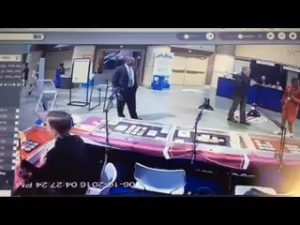 Watchers of the @coinsblog Twitter feed have seen that I post storied of robberies of coin collections. These are heart breaking stories not because the owner lost something of value. They lost something of emotional value.
Watchers of the @coinsblog Twitter feed have seen that I post storied of robberies of coin collections. These are heart breaking stories not because the owner lost something of value. They lost something of emotional value.
I have seen stories of a stash of mostly Morgan silver dollars that have been stolen from a dresser draw that the owner either has saved all of these years or were from a relative who saved them as part of a hedge from a depression. There was a story that a young single mother found gold coins in her late father’s house and was going to use the coins to care for her children only to have someone she trusted later steal the coins. Then the story of the Flying Eagle and Indian Head cent collection with most coins in almost uncirculated quality including a 1909-S coin put together by a late grandparent that was stolen while the family was on vacation.
While these are heartbreaking, it is great to hear about the community working together to capture a thief.
Two thieves went to the Long Beach Expo looking to cash in on their ill-gotten gain when a dealer thought he recognized the coins as described from an earlier robbery. The dealer notified on-site security who apprehended the criminals. They were handed over the Long Beach police.
It is wonderful that the community will pay attention to these unfortunate incidents and help law enforcement recover these coins!
This is the press release was issued on behalf of Positive Protection, Inc.Positive Protection, Inc. of Temecula, California, and in cooperation with Stack’s Bowers Galleries of Santa Ana, California.
Positive Protection Guard TacklesSuspected Coin Thief In Long Beach(Long Beach, California) — A suspected thief was tackled by a Positive Protection, Inc. (www.ppius.com) security guard as he tried to escape at the Long Beach Coin, Currency, Stamp & Sports Collectible Expo (www.LongBeachExpo.com) on Friday, June 10, 2016. An alleged accomplice with a backpack containing more than $300,000 of rare coins was also taken into custody.Both suspects were turned over to Long Beach police on suspicion of burglary, robbery and possession of stolen property. Two other suspects were arrested the next day and more stolen coins were recovered.“They reportedly were trying to sell coins at the Long Beach Expo in the Long Beach Convention Center. One dealer they approached, Karl Stephens, thought the coins they were offering had been stolen earlier in a robbery in the San Bernardino, California area,” said Patrick Coward, a guard for Positive Protection of Temecula, California, a company that provides security services for coin and jewelry dealers.“When the suspects tried to leave, the dealer shouted out to stop them. I was nearby and when one suspect started to run I chased him and tackled him at the door. Additional security personnel from the show helped subdue him. The second suspect was stopped without a problem at the door as he tried leave. His backpack was filled with more than 100 ancient coins and other gold and silver coins worth more than $300,000,” explained Coward, a former New York City homicide detective.The brief chase and the tackle were captured on surveillance video at the booth of Stack’s Bowers Galleries (www.stacksbowers.com) of Santa Ana, California and New York City.“With the help of a knowledgeable dealer and the fast action of trained security professionals, two suspected thieves were caught and valuable, stolen rare coins have been recovered,” said Robert Brueggeman, President of Positive Protection which provides on-site security for all the Whitman Expo and American Numismatic Association convention shows. “We always want a safe, enjoyable environment for dealers and the public at these collectible shows, but we also must always be on alert.”A day after the capture of the two suspects at the coin show, Long Beach Police arrested two more suspects who reportedly came to retrieve the car of the first two suspects. Investigators recovered from the car what is believed to be the remainder of the stolen rare coins.
This surveillance video shows Positive Protection, Inc. security guard and former New York City Police homicide detective Patrick Coward on the left as he immediately chased and tackled a suspected coin thief when the suspect tried to flee from a coin show in Long Beach, California on Friday, June 10, 2016. His alleged accomplice is then stopped at the door while carrying a backpack with a reported $300,000 in rare coins believed stolen in an earlier theft in the San Bernardino, California area.
Stacks Bowers Long Beach Surveillance Video
POLL: Do more series?
With stories like this and how Europe is having a difficult time with the counterfeiting of £1 and €2 coins during a time of economic uncertainty had me considering what I could do to help the community.
Rather than just talk about the problems I decided that I would write about how help collectors understand what to do to protect themselves. This lead to the six-part series this past week about how you can check your coins to ensure that they are genuine. For some, the series may have been a rehash of old information. But sometimes seeing again may be a good refresher.
What do you think? Did you like the series? What did you (or did you not) like?
Do (or did) you like the series on Detecting Counterfeits?
Total Voters: 9
Would you like to see more information about other topics? Would you like me to go back to just blogging in single posts? Leave me a comment here with your suggestions.
And THANK YOU for being a reader!
Detecting Counterfeits: Final Word
This is final part of a 6 part series
- Detecting Counterfeits Introduction
- Visual Inspection
- Measurements
- Specific Gravity
- Currency
- Final Word ← you are here
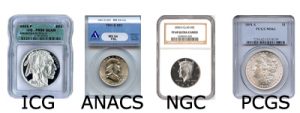 If you are uncomfortable trying to detect whether a coin is counterfeit or not, you might first consider buying from a reputable dealer who has return and/or buy back policies. If you buy raw coins and have questions, ask that the coin be examined by a third-party grading service such as Numismatic Guarantee Corporation, Professional Coin Grading Service, ANACSand Independent Coin Graders. These third-party grading services have a buy-back guarantee so that if the coin is ever found to be counterfeit after it was certified they will buy the coin from you at the price you paid. You may be asked to pay the grading fees. Some dealers may charge a service fee for submitting coins to the grading services on your behalf.
If you are uncomfortable trying to detect whether a coin is counterfeit or not, you might first consider buying from a reputable dealer who has return and/or buy back policies. If you buy raw coins and have questions, ask that the coin be examined by a third-party grading service such as Numismatic Guarantee Corporation, Professional Coin Grading Service, ANACSand Independent Coin Graders. These third-party grading services have a buy-back guarantee so that if the coin is ever found to be counterfeit after it was certified they will buy the coin from you at the price you paid. You may be asked to pay the grading fees. Some dealers may charge a service fee for submitting coins to the grading services on your behalf.
If you own coins that you may have questions about, either bring it to a dealer for an opinion or submit the coin to the third-party grading service yourself. NGC and PCGS have membership services that allow you to directly submit coins for authentication and grading. Members of the American Numismatic Association can register to directly submit coins to NGC. ANACS and ICG allows for collectors to directly submit coins for authentication and grading.
For collectible currency, buy from a reputable dealer who has return and/or buy back policies. If you buy ungraded currency and have questions, ask that the note be examined by a third-party grading service such as Paper Money Guarantee or PCGS Currency. These third-party grading services have a buy-back guarantee so that if the note is ever found to be counterfeit after it was certified, they will buy it from you at the price you paid. You may be asked to pay the grading fees. Some dealers may charge a service fee for submitting coins to the grading services on your behalf.If you are buying through an online auction and you have any question about the coin, you are better off not trying to purchase it than trying to deal with returns. While there are quite a few reputable dealers who sell on these sites, it may take more than a month for the process from purchase to refund to occur. During that time, you will not have access to this money.
Remember, caveat emptor, “let the buyer beware.” Without a warranty or some type of assurance, such as a graded and encapsulated coin, the buyer takes all of the risk.
For sellers, caveat venditor, “let the seller beware.” Unless you expressly disclaim any responsibility, you will be held liable if the item is not true to its specification. You may also lose a future customer if that person feels cheated.
The Hobby Protection Act
Over the last number of years, we have seen when a hobby becomes popular and items increase in value, there are opportunists who will try to do whatever it takes to make money from the gullible and uneducated. This chapter was written to inform and educate you as to what to expect from those looking at your wallet and not to you as a valued customer so that you are not a victim.
When I discuss these issues I am eventually asked, “Aren’t we protected by the Hobby Protection Act?” In short, the answer is yes and no. The Hobby Protection Act of 1973 and was amended in 1988 represents an attempt at stopping counterfeits in all collectibles based on the way the world worked in 1973 and slightly updated in 1988. A lot has changed since then including the technologies available to counterfeiters.
The Hobby Protection Act requires that coins not made by the U.S. Mint include the word “COPY” somewhere on the surface. The law allowed law enforcement and buyers to go after the suppliers. The problem was that the suppliers were mainly in China and out of the reach of the U.S. criminal justice system. That changed in December 2014 when congress passed and the president signed the Collectible Coin Protection Act (Public Law No. 113-288). Under the new law, consumers and law enforcement can take civil action against the distributors and resellers of counterfeit coins.
The Federal Trade Commission has published draft rules to update the wa they enforce the (16 CFR Part 304) made by the passage of the Collectible Coin Protection Act.
FTC is required to publish the new rule in the Federal Register (81 FR 23219) and ask for public input on the new rules. These rules are the result of corrections made after a previous draft asked for comments on the costs, benefits, and overall impact of the rules.
- The Federal Register entry with the published proposed rule from the FTC is available from http://1.usa.gov/1ru569X.
- A PDF copy of the Collectible Coin Protection Act can be downloaded from http://1.usa.gov/1NUoHdd.
Comments can be made on the FTC’s website or via postal mail as outlined on the website and in the Federal register.
Even though the law has changed, you should educate yourself and work with reputable people to build your collection. Education can be fun and the knowledge will help you better enjoy the hobby!
- Certified coins images courtesy of Dakota Coin.
- Image of the PMG holder courtesy of Paper Money Guarantee.
- Image of the PCGS Currency holder courtesy of PCGS Currency.
